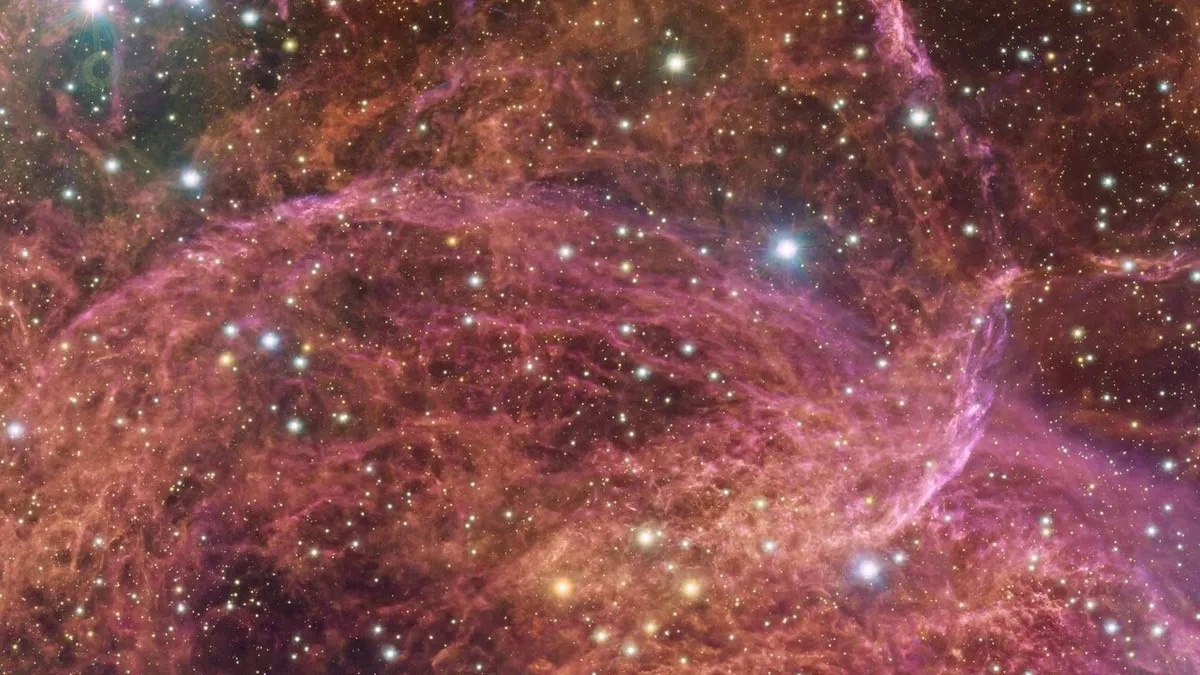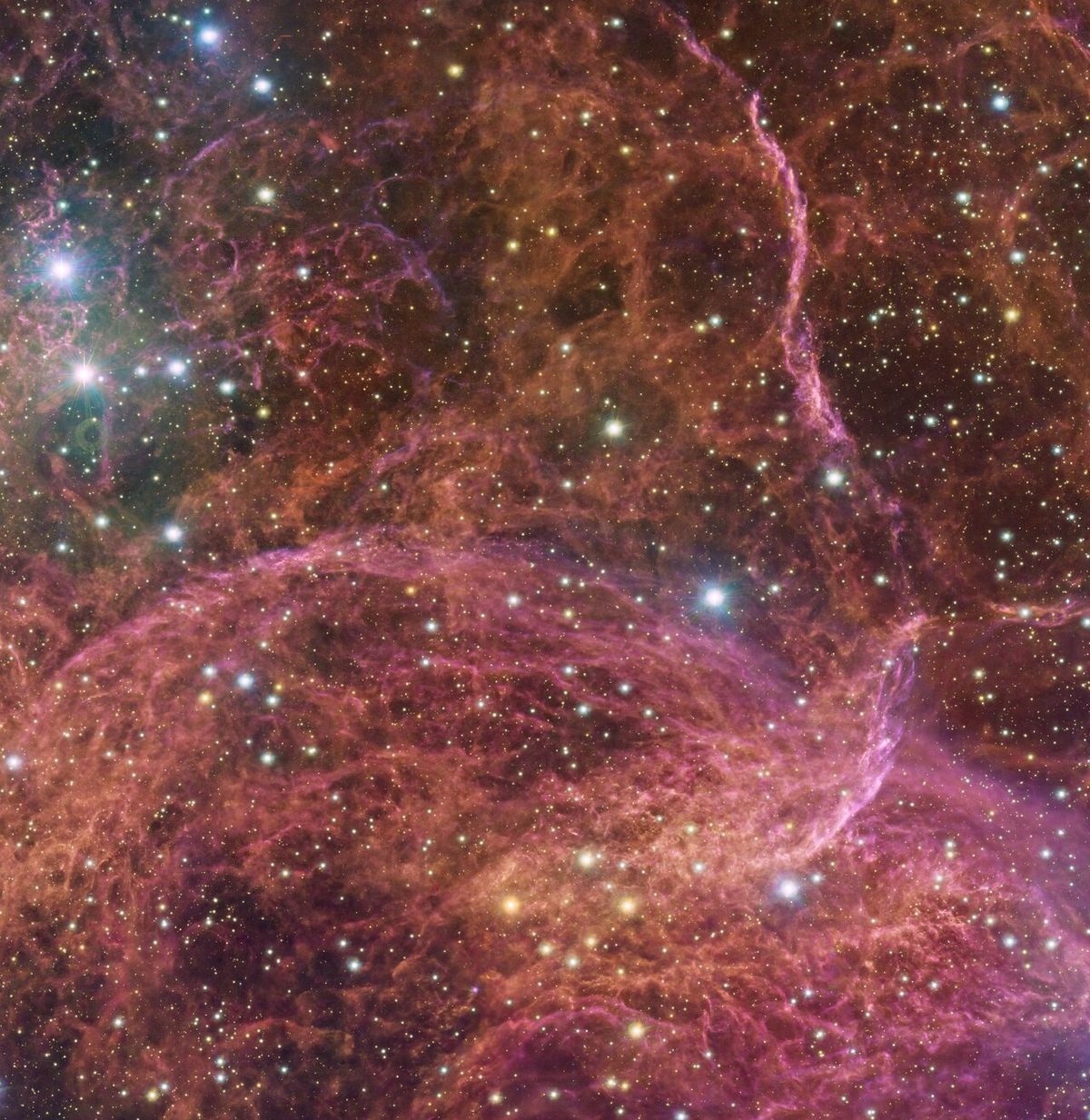29.11.2023
A mesmerizing new view of the Vela constellation captures the beautiful aftermath of a massive stellar explosion.

The Vela supernova remnant that formed from a stellar explosion that occurred 11,000 years ago, captured by the European Southern Observatory’s Very Large Telescope. (Image credit: ESO/VPHAS+ team; acknowledgement: Cambridge Astronomical Survey Unit)
A mesmerizing new view of the Vela constellation captures the beautiful aftermath of a massive stellar explosion.
When a star reaches the end of its life, it explodes in a brilliant, fiery explosion, also known as a supernova. The ejected material expanding from such an explosion and the resulting, glowing interstellar material left behind have been captured in a new image from the European Southern Observatory (ESO).
Located in the constellation Vela, the supernova remnant is the result of a stellar explosion that occurred about 11,000 years ago. The ESO view shows a small, but very intricate, portion of the remnant that exhibits beautifully illuminated clouds of interstellar dust and gas dotted with twinkling stars.

A full view of the ESO's new image. (Image credit: ESO/VPHAS+ team; acknowledgement: Cambridge Astronomical Survey Unit)
"During this violent event, the star would have shined so brightly that it could be seen during the day," ESO officials said in a statement.
Supernovas are so energetic they can briefly outshine an entire galaxy, radiating more energy than our sun will in its entire lifetime. While the supernova occurred thousands of years ago, however, the light of the explosion was only recently observed due to the amount of time it takes for light from distant space to reach Earth.
Taken using the ESO's Very Large Telescope (VLT), the recent image of the Vela supernova remnant captures an ornate view of the bright pink, gaseous filaments and bright blue stars in the foreground as well.
The VLT, located at ESO’s Paranal Observatory in the Atacama Desert of Chile, is equipped with a 286-million-pixel OmegaCAM that has filters ranging from ultraviolet to near-infrared.
"OmegaCAM can take images through several filters that each let the telescope observe the light emitted in a distinct color," ESO officials said in the statement. "To capture this image, four filters have been used, represented here by a combination of magenta, blue, green and red."
The ESO released the new photo of the Vela supernova remnant on Nov. 20.
Quelle: SC
